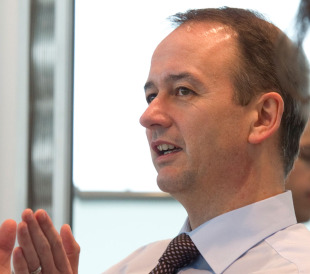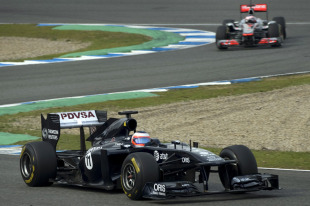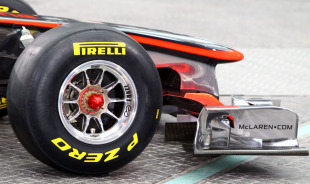- Interview with Jonathan Neale
'The first job is to get on firm ground'

- Teams:
- McLaren
McLaren's managing director Jonathan Neale is a busy man at the moment. The new MP4-26 is just five test days away from its debut race and the pressure is growing as the team works tirelessly to turn it into a front runner. But despite his mounting workload, Neale took an hour out of his schedule to talk to a group of journalists about the upcoming season at the McLaren Technology Centre last Friday. ESPNF1 was there to hear what he had to say about the new car, the opposition and the importance of the new Pirelli tyres.
McLaren made an early decision to launch its car at the second test this year, meaning it had more time to understand the new Pirelli tyres on the old car but less time to debug the new chassis. Neale sticks by the decision, but admits that launching a new car is a delicate and time-consuming process that can leave a team taking two steps back in order to take half a step forward.
"Everybody is concerned about pace at this time because you've got no firm ground," he says. "Job No. 1 for us is to make sure the car will go down and do the mileage, make sure there are no gremlins and that the numbers in the windtunnel correlate with the car on the circuit. If you've got a problem, particularly if it's an aerodynamic one - if you've got a yaw issue or you've got a stall issue - not only have you got to go backwards and try to fire fight the issue itself, you've then suddenly got a whole series of question marks about the upgrades you are bringing, because you are no longer on firm ground. I think the job for all of us is to get on to firm ground, which is happening."
Unpicking the tyre and car data from one another was one of the main reasons McLaren sent last year's car to the first test.
"Both drivers, having driven the MP4-25 on the same tyres, were able to feel the difference between the two cars - I think that was a smart thing for us to do," Neale explains. "Given that there are so many changes going on, it would be very difficult to disentangle and reengineer what was tyre, what was car, what was aerodynamic and what was mechanical."
While most of Neale's attention is focused on the new McLaren, he can't help but look at the competition, both out of curiosity and for new tricks. For him, the Renault with its forward-exiting exhaust and the Williams with its ultra-compact rear end stand out, even though they aren't setting the pace.

The more the teams test, the clearer it becomes that tyres will play a significant role in this year's racing. Pirelli has set out to design a set of compounds that don't last as long as the outgoing Bridgestones with the intention of mixing up strategy and forcing drivers to make more pit stops. The differences between the compounds will also be a factor and Neale reckons this could have a massive influence in the opening stages of a race, when the top ten have to start on the compound they qualified on.
"If you're on the front of the grid on a very soft tyre, you'll be sitting there with somebody behind you who has probably got another 15 laps in their tyres," he explains. "You're not going to pull a 20 second gap in six to ten laps, so you're going to drop straight back into traffic and backmarkers when you pit. I think it promises some very interesting racing."
He also said the super soft tyres, which will be the quickest over one lap, act like old qualifying tyres, with one fast time in them before they drop dramatically in performance.
"The softer tyres produced a lap time about one second a lap faster than the harder tyres we had last week, and a one second per lap degradation thereafter - if you don't nail that first lap you're not going to be able to lift let the tyre cool and come back again. That's it, it's done."

"If you can get an 11-12km/h boost in top speed out of the wing it should work, provided that as you pull out onto a piece of circuit it's got grip. If you pull out off the line onto a load of marbles, then it doesn't matter what you've got because you're grip limited rather than torque limited."
But with Pirelli working hard to improve the show, Neale was keen to emphasise that he was not criticising the new tyres: "The marbles are not a concern. I think they're a feature." It must also be kept in mind that neither the cars nor the tyres have run in the kind of temperatures expected at the average race weekend and their characteristics may change come the start of the season.
It's clear that F1 2011 is still very much a work in progress as testing continues, but judging by Neale's enthusiasm, we should be in for another cracking season.

